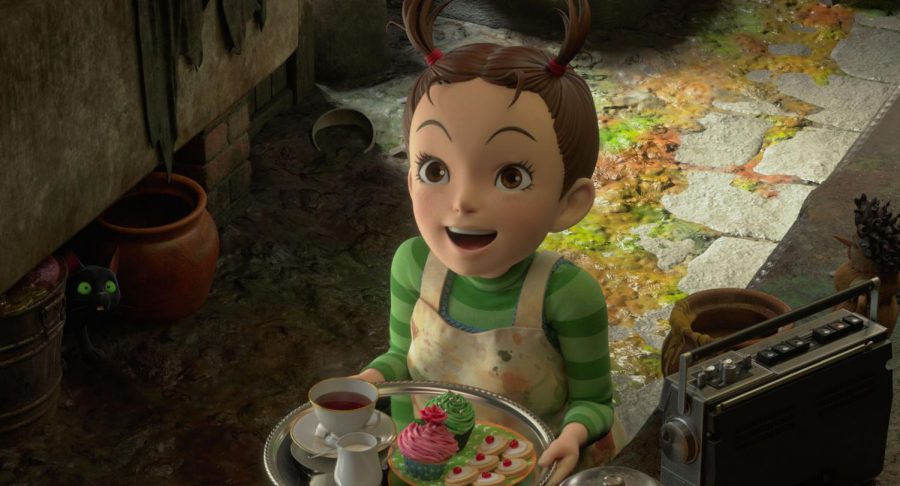Review: ‘Earwig and the Witch’ fails to live up to Studio Ghibli standard
“Directed by Miyazaki’s son, Goro Miyazaki, “Earwig and the Witch” had potential to be a charming story, but it ultimately fell flat.” © 2020 NHK, NEP, Studio Ghibli
March 12, 2021
Studio Ghibli’s first attempt at computer animation, “Earwig and the Witch,” proves that the studio should stick to hand-drawn 2D animated films.
Studio Ghibli co-founder Hayao Miyazaki is known to have strong feelings against computer generated, or CG, animation and famously reacted to a CG clip. “I strongly feel that this is an insult to life itself,” he said. Directed by Miyazaki’s son, Goro Miyazaki, “Earwig and the Witch” had potential to be a charming story, but it ultimately fell flat.
Perhaps if his son had heeded his warnings against straying from the traditional animation style, “Earwig and the Witch” could have been more successful.
The film follows a girl named Earwig, who has been dropped off at an orphanage by her mother. Eventually, Earwig is taken in by Bella Yaga, a nasty, selfish witch, and a sensitive demon called the Mandrake. She is drawn into a world of spells, potions and hard work, as Bella Yaga has adopted Earwig in order to force her into servitude.
Films like “Spirited Away” and “Howl’s Moving Castle,” both Studio Ghibli creations, have been lauded as some of the greatest animated films of all time. The whimsical style along with the beautifully hand-drawn backdrops give Studio Ghibli a signature look that fans have come to expect in each film.
Because of these high expectations, Goro Miyazaki’s “Earwig and the Witch” was a real disappointment. The animation was rough around the edges, with plasticky, emotionless characters and backdrops that were almost completely devoid of life. The classic detailed settings were missing, and the characters’ faces were so inexpressive and moved so little that they were borderline creepy.
The story itself was not the most original but not the worst of its kind. Earwig is a willful, difficult child who enjoys controlling the people around her. Because of this, she doesn’t have much development, making her a one-note character. Most of the other characters are also monotonous, remaining unchanged by the end. It lacked the progression that most Studio Ghibli films bring to their characters.
Watching “Earwig and the Witch” is difficult because it stuffs the essence of Studio Ghibli films into this unemotional plastic casing. Most of their films rely heavily on aesthetic and character development, rather than an actual plot.
In the Studio Ghibli classic “Spirited Away,” for example, the film spends most of its time showing the scenery and building the world. Backgrounds of lush green forests, broken down amusement parks and bath houses filled with spirits dominate the screen. There are even scenes where almost nothing happens, like when the main character Chihiro walks for several minutes from one building to another. Nothing happens here, but the audience gets to be drawn into the world.
In fact, Hayao Miyazaki has said that he specifically includes scenes in his films where there is purposely no plot, and refers to them as “ma,” which means emptiness in Japanese.
He describes “ma” as the time between a clap.
“If you just have nonstop action with no breathing space at all, it’s just busyness. But if you take a moment, then the tension building in the film can grow into a wider dimension,” Miyazaki said in an interview.
These scenes where nothing happens can be found in all of his films and are often regarded as some of his best scenes. That’s one of the biggest issues with Goro Miyazaki’s “Earwig and the Witch” — the film is trying so hard to constantly push through a weak plot without pausing to give the audience a break.
Goro Miyazaki has always lived under the shadow of his father’s incredible work, and this attempt at CG animation did not help push him into the sun.







